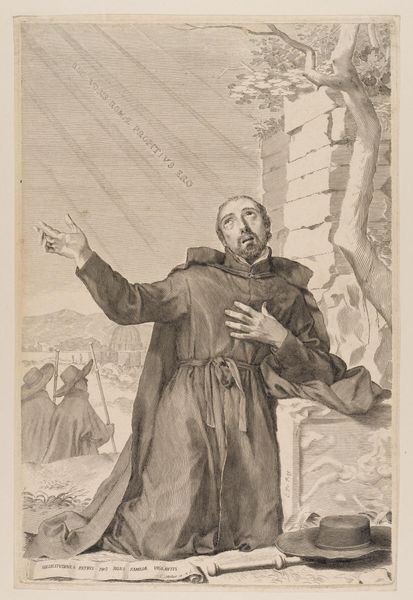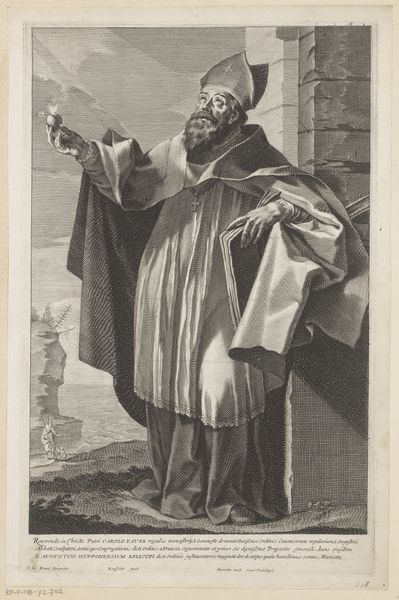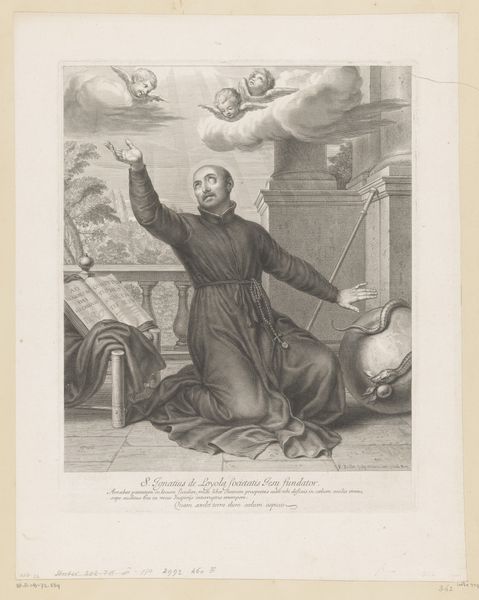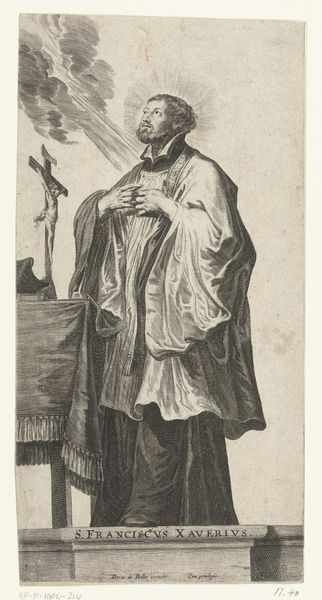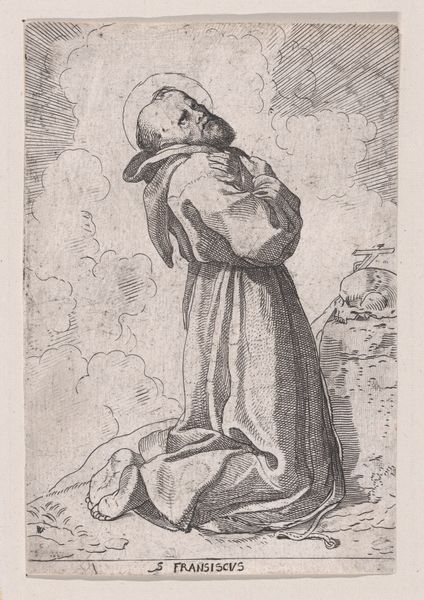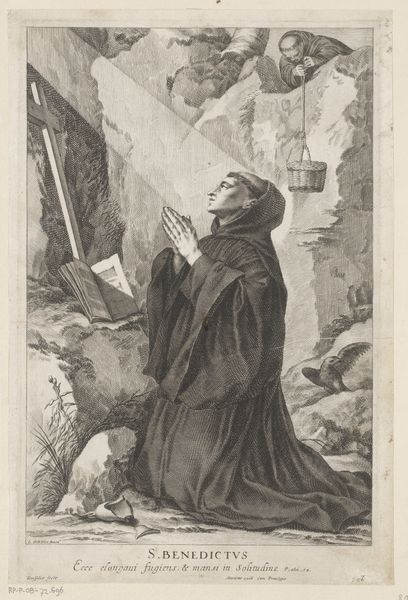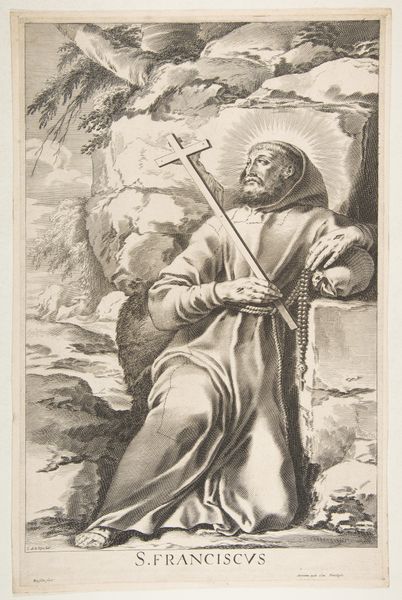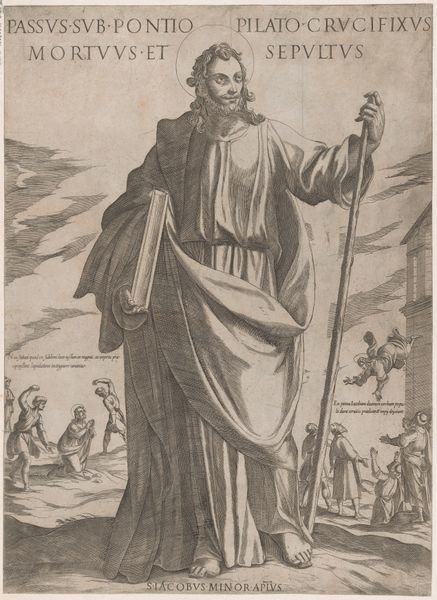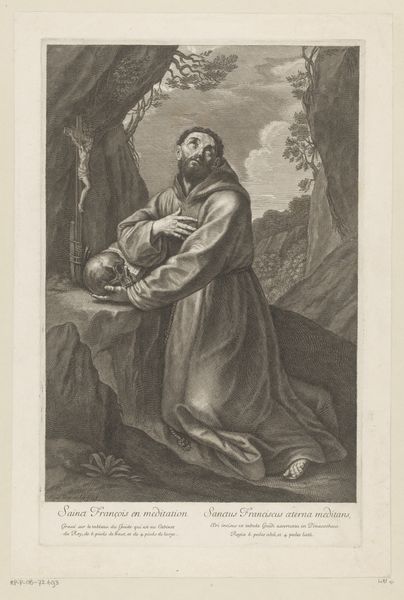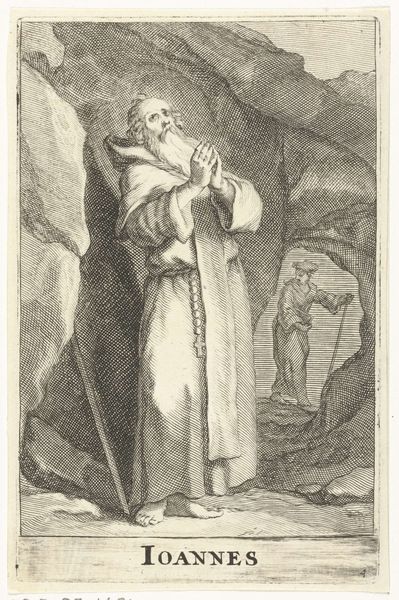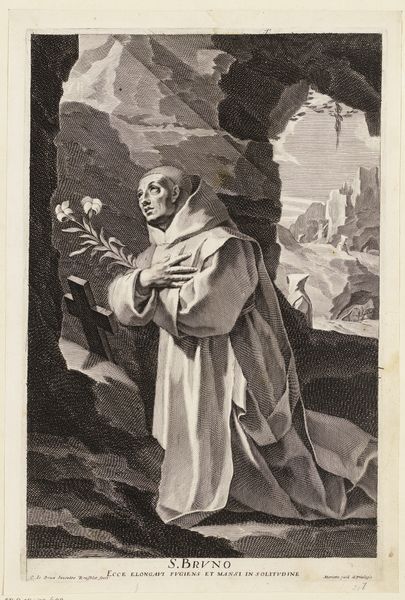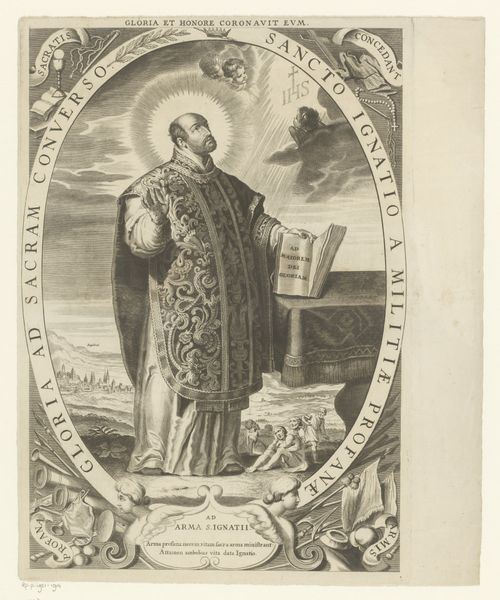
drawing, print, engraving
#
portrait
#
drawing
#
baroque
# print
#
form
#
men
#
line
#
portrait drawing
#
history-painting
#
engraving
Dimensions: sheet: 18 1/16 x 12 1/8 in. (45.8 x 30.8 cm) plate: 17 1/8 x 11 5/16 in. (43.5 x 28.7 cm)
Copyright: Public Domain
Editor: Here we have Claude Mellan's "St. Ignatius in Ecstasy," created sometime between 1600 and 1688. It’s a print, currently held at the Metropolitan Museum of Art. I’m struck by how Mellan creates such depth and emotion using seemingly simple lines. How do you interpret the symbolism at play here? Curator: This image is potent, particularly considering the era. Ignatius, eyes upturned, receives divine light. That light isn't just illumination; it’s an inscription, a voice – "Veni Vobiscum Romae Primitivus Ego," which loosely translates to "I come to you, the first in Rome." The rays become the Word. It speaks volumes about the period’s intense relationship between faith and the rapidly evolving world of printed media. Do you notice how the lines aren't merely descriptive? Editor: Yes, I see what you mean. They seem to vibrate with energy, especially around St. Ignatius himself. Is there a specific reason Mellan might have chosen engraving for this subject? Curator: Engraving lends itself to the precise depiction of light and shadow, critical for conveying the intensity of Ignatius's vision. Think of the psychological impact – the sharp contrast emphasizes his spiritual transcendence. Moreover, the medium allows for reproduction, disseminating the image, and thus the ideals of Ignatius and the Jesuit order, more widely. Note the background; it roots the saint in a place, making him tangible, part of history, and not just a myth. What does that grounding suggest to you? Editor: That makes perfect sense. Grounding him in a physical location and using prints to distribute this image...It was a very intentional method of establishing both faith and a historical narrative. Curator: Precisely. Through visual cues and carefully chosen text, Mellan successfully merges the ethereal with the earthly, using a specific visual language of the time. Editor: I’m definitely seeing new layers in this piece now. The visual language and symbolic inscription reveal such fascinating nuances. Curator: It really makes you consider how much meaning is embedded within even the seemingly simplest artistic choices.
Comments
No comments
Be the first to comment and join the conversation on the ultimate creative platform.
